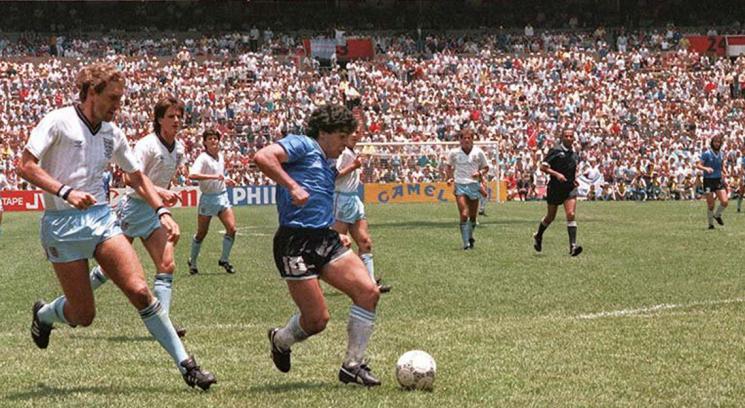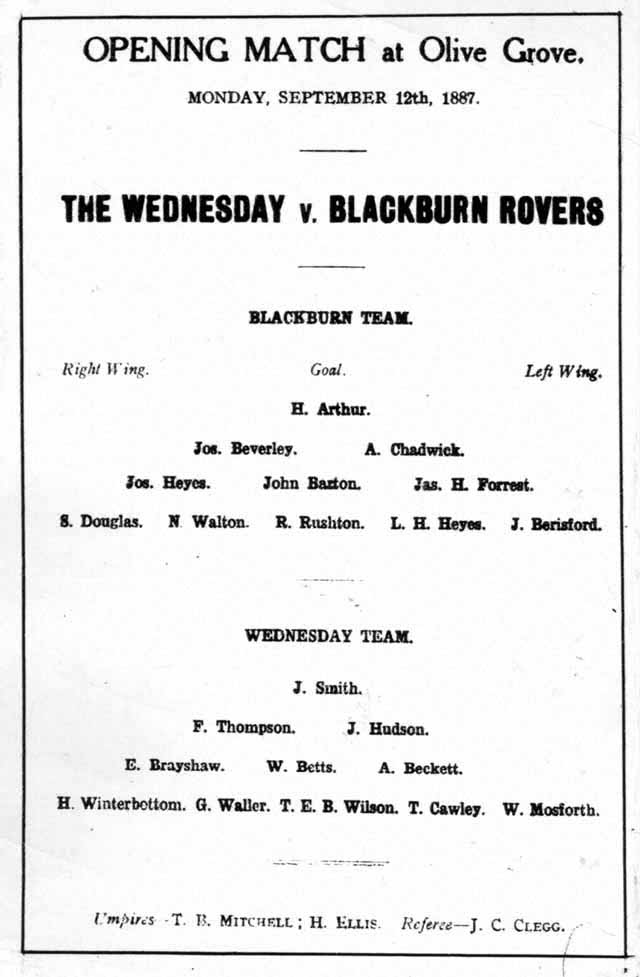|
Catenaccio
''Catenaccio'' () or The Chain is a tactical system in football with a strong emphasis on defence. In Italian, ''catenaccio'' means "door-bolt", which implies a highly organised and effective backline defence focused on nullifying opponents' attacks and preventing goal-scoring opportunities. History Predecessors and influences Italian ''catenaccio'' was influenced by the ''verrou'' (also ''doorbolt'' or ''chain'' in French) system invented by Austrian coach Karl Rappan. As coach of Switzerland in the 1930s and 1940s, Rappan played a defensive sweeper called the ''verrouilleur'' (literally "the one who locks the door"), positioned just ahead of the goalkeeper. Rappan's ''verrou'' system, proposed in 1932, when he was coach of Servette, was essentially a modification of the 2–3–5 system, and in some ways resembled the modern 4–4–2 or 4–3–3 formations; his system implemented with four defenders, three of which were fielded in a fixed role playing a strict man-to ... [...More Info...] [...Related Items...] OR: [Wikipedia] [Google] [Baidu] |
Defender (association Football)
In the sport of association football, a defender is an outfield player whose primary role is to stop attacks during the game and prevent the opposition from scoring. Defenders fall into four main categories: centre-backs, full-backs, sweepers, and wing-backs. The centre-back and full-back positions are most common in modern formations. The sweeper and wing-back roles are more specialised, often limited to certain formations dependent on the manager's style of play and tactics. Centre-back The centre-back (also known as a central defender or centre-half, as the modern role of the centre-back arose from the centre-half position) defends in the area directly in front of the goal and tries to prevent opposing players, particularly centre-forwards, from scoring. Centre-backs accomplish this by blocking shots, tackling, intercepting passes, contesting headers and marking forwards to discourage the opposing team from passing to them. Centre-backs are often tall and positioned ... [...More Info...] [...Related Items...] OR: [Wikipedia] [Google] [Baidu] |
Gipo Viani
Giuseppe "Gipo" Viani (13 September 1909 – 6 January 1969) was an Italian football player and manager from the Province of Treviso who played as a midfielder. Playing career Viani was born Treviso. He played his entire career in the Italian football system; he is best known for his time with Ambrosiana and Lazio. Managerial career After retiring from playing, Viani went on to manage many Italian football clubs, including A.C. Milan, Roma and the Italy national team amongst others; he coached Italy at the 1960 Summer Olympics in Rome, alongside Nereo Rocco, helping the team to a fourth-place finish in the tournament. Style of management During his time with Salernitana in the 1940s, Viani devised a tactical system which came to be known in the Italian media as 'vianema', which was influenced by Karl Rappan's ''verrou'', and which in turn also inspired the Italian ''catenaccio'' defensive strategy later popularised by Rocco and Helenio Herrera. The system originated from a ... [...More Info...] [...Related Items...] OR: [Wikipedia] [Google] [Baidu] |
Playmaker
In association football, a playmaker is a footballer who controls the flow of the team's play, and is often involved in offensively and defensively playing Passing (association football), passing moves which lead to Goal (sport), goals, through their vision, technique, ball control, creativity and passing ability. They are sometimes called the "number 10" of the team, as they often wear the Squad number (association football), number 10 jersey. In English football, the term overlaps somewhat with an attacking midfielder although playmakers are not necessarily constrained to a single position. Several playmakers can also operate on the Winger (association football), wings or as a creative, supporting striker; some can also function in a more Central midfielder, central midfield role, alternating between playing in more offensive roles and participating in the build-up plays in the midfield. Other players still function as deep-lying playmakers, in a free role, Defensive midfielder ... [...More Info...] [...Related Items...] OR: [Wikipedia] [Google] [Baidu] |
Formation (association Football)
In association football, the formation of a team refers to the position players take in relation to each other on a Association football pitch, pitch. As association football is a fluid and fast-moving game, a player's position (with the exception of the goalkeeper (association football), goalkeeper) in a formation does not define their role as tightly as that of rugby football, rugby player, nor are there breaks in play where the players must line up in formation (as in gridiron football). A player's position in a formation typically defines whether a player has a mostly defensive or attacking role, and whether they tend to play centrally or towards one side of the pitch. Formations are usually described by three or more numbers in order to denote how many players are in each row of the formation, from the most defensive to the most advanced. For example, the "4–5–1" formation has four Defender (association football), defenders, five midfielders, and a single Forward (assoc ... [...More Info...] [...Related Items...] OR: [Wikipedia] [Google] [Baidu] |
Inter Milan
Football Club Internazionale Milano, commonly referred to as Internazionale () or simply Inter, and colloquially known as Inter Milan in English-speaking countries, is an Italian professional Association football, football List of football clubs in Italy, club based in Milan, Lombardy. Since 1947, Inter has shared the San Siro stadium with AC Milan—the club from which it originally split. The San Siro is the largest stadium in Italy, with a capacity of 75,817. The long-standing rivalry between the two clubs, known as the ''Derby della Madonnina'', is one of the most widely followed derbies in world football. Founded in 1908 following a schism within the Milan Foot-Ball and Cricket Club (now AC Milan), Inter won its first championship in 1910. Since its formation, the club has won 37 domestic trophies, including 20 Serie A, league titles, nine Coppa Italia, and eight Supercoppa Italiana. From 2006 to 2010, the club won five successive league titles, equaling the all-time re ... [...More Info...] [...Related Items...] OR: [Wikipedia] [Google] [Baidu] |
Helenio Herrera
Helenio Herrera Gavilán (; 10 April 1910 – 9 November 1997) was an Argentina, Argentine and naturalised France, French association football, football player and Manager (association football), manager. He is best remembered for his success with the Inter Milan team known as ''Inter Milan#Grande Inter (1960–1967), Grande Inter'' in the 1960s. During his managerial career, Herrera won four La Liga titles in Spain (with Atlético Madrid and FC Barcelona, Barcelona) and three Serie A titles in Italy with Inter. He also guided Inter to European glory, winning two consecutive UEFA Champions League, European Cups, among several other honours. He is regarded as one of the greatest managers of all time. Herrera was arguably the first manager to collect credit for his teams' performances, in the process becoming a superstar in the world of football. Up to that time, managers were more marginal figures in a team. All teams throughout Europe were known for their headline-grabbing ind ... [...More Info...] [...Related Items...] OR: [Wikipedia] [Google] [Baidu] |
Karl Rappan
Karl Rappan (26 September 1905 – 2 January 1996) was an Austrian footballer and coach. He played and managed mostly in Switzerland, where he won multiple titles. He had four tenures as coach of the Switzerland national team, which he managed in three World Cups, and is the all-time leader in matches won as coach of the Swiss team. He introduced a major football strategy known as the "bolt", which gave origin to the ''catenaccio'' system. He also helped create the UEFA Intertoto Cup. Playing career Rappan, born in Vienna, played as a half and forward. As a teenager, he played for the club ''Donau Wien''. In 1924, he joined Wacker Vienna, where he played four years. He was selected to the Austria national team in while at Wacker. He then played one season at each of the clubs FK Austria Wien and Rapid Wien, winning the 1929–30 Austrian league with the latter. Rappan then moved to Switzerland, where he started playing for Servette FC in 1931, becoming a player-coach until h ... [...More Info...] [...Related Items...] OR: [Wikipedia] [Google] [Baidu] |
Association Football Tactics And Skills
Team tactics as well as individual skills are integral for playing association football. In theory, association football is a very simple game, as illustrated by Kevin Keegan's namely assertion that his tactics for winning a match were to "score more goals than the opposition". Tactical prowess within the sport is nonetheless a craftsmanship of its own, and one of the reasons why managers are paid well on the elite level. Well-organised and ready teams are often seen beating teams with more skillful players on paper. Manuals and books generally cover not only individual skills but tactics as well. Association football teams consist of ten outfield players and one goalkeeper, which makes passing an integral part of game strategy, and is taught to players from a young age. Other skills taught to players on an individual level are dribbling, heading the ball and ball control for receiving the ball. Other skills that are taught individually are jockeying for defenders, and shot s ... [...More Info...] [...Related Items...] OR: [Wikipedia] [Google] [Baidu] |
Man-to-man Marking
In association football, marking is an organized defensive tactic which aims to prevent a member of the opposing team (usually a striker) from taking control of the ball. Several marking strategies exist in football, and they mostly differ from each other according to the duties assigned to defenders, positioning and off-the-ball style. Man-to-man marking Man-to-man marking, or man marking, is a defensive strategy where defenders are assigned a specific opposition player to mark, as opposed to zonal marking, where a certain player marks an area of the pitch. Teams such as Inter Milan and A.C. Milan used it in their so-called catenaccio system. Their formation consisted of a defensive line made up of four man markers with a sweeper playing behind them. This brought much success to these teams and soon these tactics became popular throughout the world of football. However, this tight marking was often at the expense of the (attacking) spectacle of the game itself, because "defend ... [...More Info...] [...Related Items...] OR: [Wikipedia] [Google] [Baidu] |
Ottavio Barbieri
Ottavio Barbieri (; 30 April 1899 – 28 December 1949) was an football in Italy, Italian association football midfielder and manager. He won campionato Alta Italia 1944 (Champion of Italy de facto). Club career Originally from Genoa, as a player Barbieri was a List of one-club men in association football, one club man, and spent his entire club career at hometown side Genoa C.F.C., Genoa. International career At international level, Barbieri most notably represented Italy national football team, Italy Italy at the 1924 Summer Olympics, 1924 Summer Olympics Football at the 1924 Summer Olympics, football tournament. Managing career As a manager, Barbieri led L'Aquila Calcio during the 1933–34 season, winning the Italian 1st Division Championship and bringing the team to serie B for the first time. He later worked with Atalanta B.C., Atalanta in Serie B between 1936 and 1938, before coming back to Genoa, now as a coach, in 1939. In 1944 won campionato Alta Italia 1944 (champion ... [...More Info...] [...Related Items...] OR: [Wikipedia] [Google] [Baidu] |






